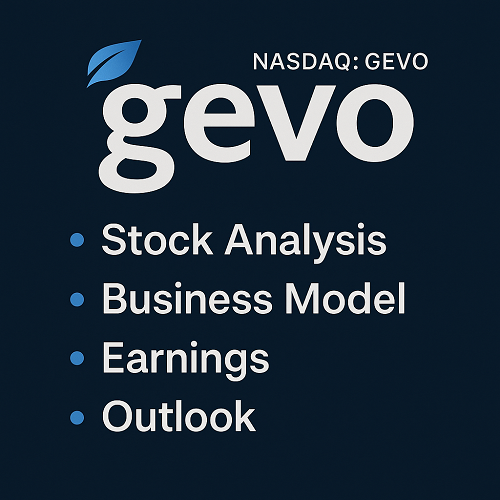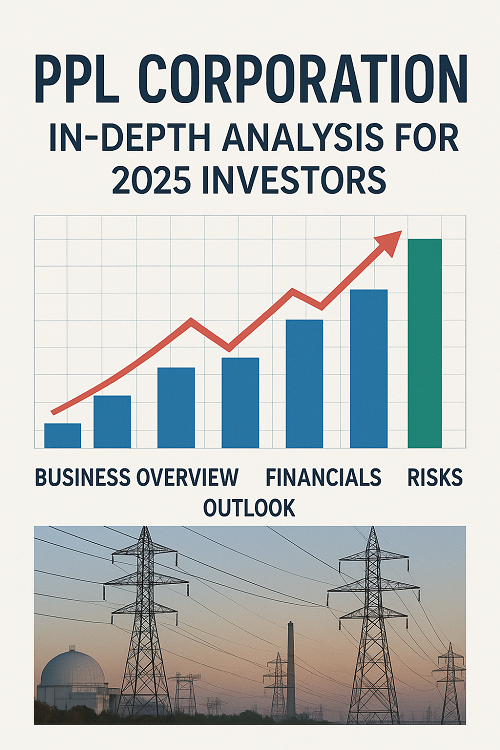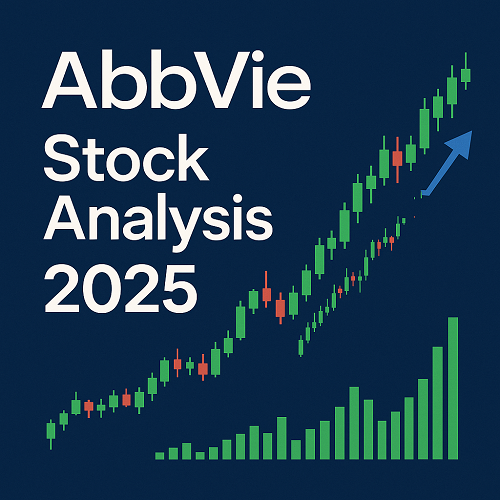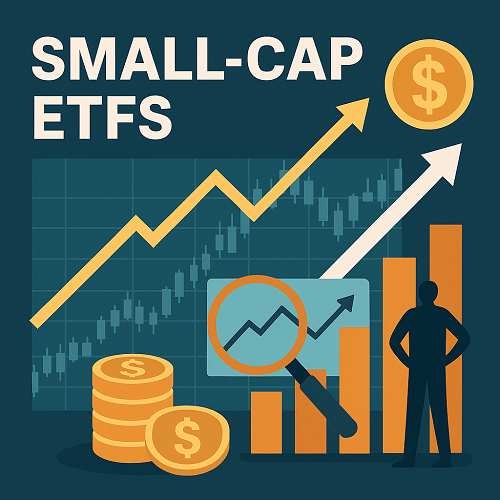Why Gevo Matters Now
Few companies straddle the intersection of renewable energy transition, biofuels, carbon credit markets and capital markets as directly as Gevo, Inc. (ticker GEVO). For traders and investors seeking opportunities in the green energy / sustainability theme, Gevo presents both high upside and high risk. In this article, we dig far deeper than the simple quote-page summary, offering actionable insights for stock traders, forex cross-asset participants and even crypto/commodity-adjacent strategists.
Company Overview & Business Model
What does Gevo do?
Gevo is a renewable chemicals and advanced biofuels company, headquartered in Englewood, Colorado.
Key features of its business:
- Produces low-carbon liquid hydrocarbons (including drop-in fuels) from renewable feedstocks, targeting gasoline, diesel, jet fuel replacement.
- Operates in three core segments: Gevo Fuels (renewable gasoline/jet), GevoRNG (renewable natural gas via anaerobic digestion), and Gevo Chemicals (isobutanol, isooctane, etc) from biomass.
- Embraces a “circular economy” model: regenerative farming, methane capture, carbon sequestration, and low-carbon fuel production.
Why it stands out
- It uses existing fuel infrastructure (“drop-in” fuels) rather than requiring wholly new systems, which can lower adoption friction.
- It has diversified revenue paths: not just fuel sales but carbon credits, co-products (e.g., high‐protein animal feed) and renewable natural gas. This can help hedge pure fuel-price volatility.
- The company’s mission aligns with strong regulatory and ESG tailwinds (especially in aviation and transportation decarbonization).
Business Model Summary
| Segment | Product / Service | Revenue Driver | Notes |
|---|---|---|---|
| Renewable Fuels (Gasoline/Jet/Diesel) | Drop-in hydrocarbons from biomass | Fuel sales + associated credits | Large CAPEX, long lead-time |
| RNG / Carbon Capture | Methane capture, renewable natural gas, CO₂ removal | Sale of RNG, sale of CDR (carbon dioxide removal) credits | Emerging market, regulatory driven |
| Specialty Chemicals & Co-Products | Isobutanol, feeding animal feed, corn oil distillers | Chemical sales, feed co‐product revenue | Adds margin and diversification |
Recent Performance & Q2 2025 Earnings Highlights
Q2 2025 key results
- Gevo reported net income attributable to Gevo of approximately US $2.1 million in Q2 2025.
- Adjusted EBITDA came in at about US $17 million for the quarter.
- Revenue in the quarter landed at ~US $43.4 million, topping estimates (consensus EPS −$0.07, actual +$0.01).
- The company ended the quarter with ~US $127 million in cash and equivalents.
Why this matters
- Achieving positive net income is a major inflection for Gevo, signaling the transition from speculative development to operational performance.
- The EBITDA positive result suggests underlying businesses (low-carbon ethanol + RNG + carbon credits) may be scaling into profitability.
- It gives traders confidence: the company is executing, not just projecting.
Shortcomings / caveats
- While profitability is achieved, the absolute scale remains modest and heavy CAPEX remains for SAF (sustainable aviation fuel) plants.
- The business is still reliant on regulatory credits and subsidies, which adds policy/weather risk.
- Fuel and feedstock costs, commodity cycles (corn, natural gas) have outsized impact on margins.
Key Growth Drivers: SAF, RNG, Carbon Credits
Sustainable Aviation Fuel (SAF)
Gevo is developing the “ATJ” (Alcohol-to-Jet) pathway and a large-scale net-zero plant (“Net-Zero 1”) in South Dakota. This positions Gevo to monetise the huge aviation decarbonisation opportunity over the next decade.
Renewable Natural Gas / Methane Capture & Carbon Credits
- The GevoRNG segment captures methane (for example from manure) and converts it to renewable natural gas. This opens up revenue streams via Renewable Natural Gas markets.
- Carbon Dioxide Removal (CDR) credits: Gevo is earning revenue from capturing and sequestering CO₂, not just avoiding emissions. Q2 sales already exceeded US $1 million with potential for >US $30 million per year long‐term.
Low-Carbon Ethanol & Co-Products
While the big prize is SAF, Gevo is also monetising lower-carbon ethanol production with carbon capture and associated co-products (distillers corn oil, animal feed). These help improve margins and cash flow in the nearer term.
Why These Drivers Matter for Traders
- These are multi-year growth levers: once capacity ramps, they may generate consistent cash flows.
- They tie into regulatory regimes (e.g., low carbon fuel standards, SAF mandates) which give visibility and potential leverage.
- They create catalysts: announcements of plant milestones, capacity expansions, DOE loan guarantees all matter for price moves.
Financial Metrics & Valuation Considerations
Key Metrics
- Revenue in 2023 was low (~US $17.2 million) per some sources.
- Q2 2025: ~$43.4 million revenue; EPS +$0.01.
- Cash position ~US $127 million as of Q2 2025.
- The business remains capital-intensive; future SAF plants will require large capex and likely financing/loan guarantees.
Valuation considerations
- As a high-growth / early-commercial stage company, traditional P/E multiples may not fully apply.
- Key valuation question: Can the company scale SAF, RNG, and carbon credits rapidly, and at what margin?
- Ratios such as EV/Sales or forward EBITDA may be more appropriate.
- Traders should monitor share count dilution risk (common in development-stage companies).
- The market may assign a premium for companies that can legitimately deliver “net-zero” fuel solutions; hence, narrative and perception matter.
For forex / cross-asset traders
- GEVO shares may move alongside broader commodity cycles (corn, natural gas, oil), regulatory policy shifts (biofuel mandates), and climate-energy transition news: each of these can influence currency pairs or commodity prices indirectly.
- Example: Strong Gevo earnings + SAF plant news → may boost USD renewable energy sector sentiment → possible USD strength.
- Conversely, weak execution or subsidy risk → may weigh on USD or equity-risk assets.
Risk Factors & Market Headwinds
Execution risk
- Building large SAF plants takes time; delays or cost overruns can hurt investor sentiment.
- Dependence on future cost competitiveness vs. conventional hydrocarbon fuel.
Policy/regulatory risk
- Many of Gevo’s revenue streams (carbon credits, low carbon fuel standards, SAF mandates) depend on stable policy frameworks. A change could impact margins.
- For example, a tax credit expiration in 2029 may limit benefits unless extended.
Commodity / feedstock risk
- Feedstock costs (corn, biomass) and commodity cycles may squeeze margins.
- Oil price dynamics: if conventional jet fuel prices fall, the premium for SAF may shrink.
Dilution & financing risk
- If large plants need raising capital, share dilution risk is present.
- If loan guarantees or financing fall through, development may stall.
Market sentiment & macro risk
- Renewable energy stocks can be volatile and sentiment-driven; broader market risk (rates, inflation, supply chain issues) matters.
- For forex traders: Gevo’s performance alone may not shift major currencies unless tied to broader US-energy policy.
Trading & Investment Strategies (Stocks, Forex, Crypto-adjacent)
Stock strategy (GEVO)
Short-term traders:
- Monitor earnings release dates, plant milestones, carbon credit announcements.
- Use technical analysis: look for breakout volumes after catalyst news.
- Use stop-loss due to volatility; keep exposure moderate.
Swing/position traders:
- Consider scaling in positions ahead of expected catalysts (e.g., SAF plant start, DOE loan guarantee announcements).
- Use risk/return assessement: high reward but high risk; allocate accordingly within portfolio.
Cross-asset / Forex angle
- Monitor how renewable energy sector news influences USD strength, especially in relation to commodity currencies (CAD, AUD) which are sensitive to energy/commodity shifts.
- E.g., a strong Gevo catalyst → may increase investor appetite for clean-energy equities → possibly stronger USD relative to commodity currencies.
Crypto-adjacent strategy
- While Gevo is not a crypto company, the themes of carbon credits, tokenisation of environmental assets, verifiable supply chains may intersect with blockchain/crypto labs. Traders in crypto ESG tokens could watch Gevo’s developments.
- For instance, if Gevo begins to issue tokenised carbon credits, this might influence crypto projects in the “carbon-offset token” space — offering a speculative hedge.
Outlook & Catalysts to Watch
Key Upcoming Catalysts
- Progress and announcements for the Net-Zero 1 SAF plant in South Dakota (capacity, commissioning date).
- Major offtake agreements with airlines or fuel buyers.
- DOE or government loan guarantees being finalized.
- Carbon credit market expansion: more CDR sales, binding contracts.
- Macro / policy shifts: SAF mandates, Low Carbon Fuel Standard (LCFS) changes, feedstock subsidy policy.
Scenarios
Bull case: Gevo scales SAF production, carbon credits become a major revenue stream, margins improve, share price re-ratings.
Base case: Gradual scaling, moderate profitability, stock trades at modest multiple.
Bear case: Delays in plant construction, policy headwinds, cost overruns, dilution — share price suffers.
Time horizon
Given the nature of the business, a 3-5 year horizon is reasonable for meaningful returns — short-term traders should focus on catalysts and risk management.
Frequently Asked Questions (FAQs)
Q: Is Gevo profitable now?
A: Yes — For Q2 2025, Gevo reported net income of ~$2.1 million and adjusted EBITDA of ~$17 million.
Q: What are the biggest growth drivers?
A: Sustainable aviation fuel (SAF) production capacity, renewable natural gas & methane capture, carbon removal credits.
Q: What are the main risks?
A: Execution delays on large plant builds, regulatory/policy changes, feedstock and commodity price volatility, dilution risk.
Q: How should I trade GEVO?
A: Use a strategy aligned with your time-horizon. Short-term traders focus on catalysts and technicals; longer-term investors assess business model scaling and valuation. Cross-asset traders note renewable sector implications for commodity currencies and USD.
Q: Does Gevo have any connection to crypto or blockchain?
A: Not directly, but the company’s carbon credits and supply-chain verification systems could intersect with tokenised assets, making it of interest to crypto/ESG crossover traders.
Conclusion
Gevo, Inc (NASDAQ: GEVO) offers a compelling but highly speculative opportunity at the convergence of renewable fuels, carbon credits, and decarbonisation. With its recent profitability milestone, diversified growth engines and major upcoming catalysts — it has the potential for strong upside. However, it equally faces material execution, policy and commodity risks. For traders and investors, the reward could justify the risk if key milestones are hit and the narrative continues to strengthen.
Whether you’re trading the stock outright, incorporating cross-asset (forex) implications, or watching for ESG/crypto-linked developments — Gevo merits careful monitoring. Use disciplined risk management, stay tuned for catalyst triggers, and keep your time-horizon and exposure aligned with the high-volatility profile of this company.





 XAUT-USD
XAUT-USD  AMD
AMD  MARA
MARA  SHOP
SHOP  BULL
BULL  CL=F
CL=F